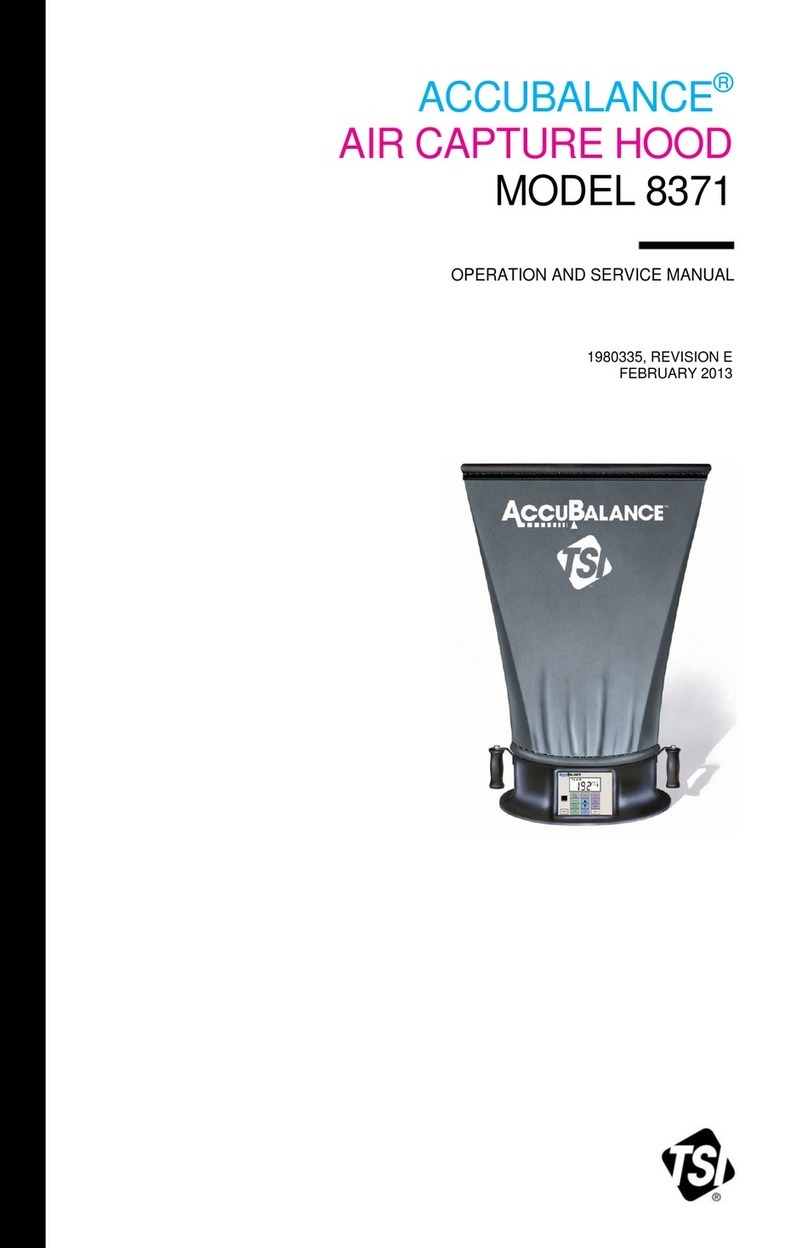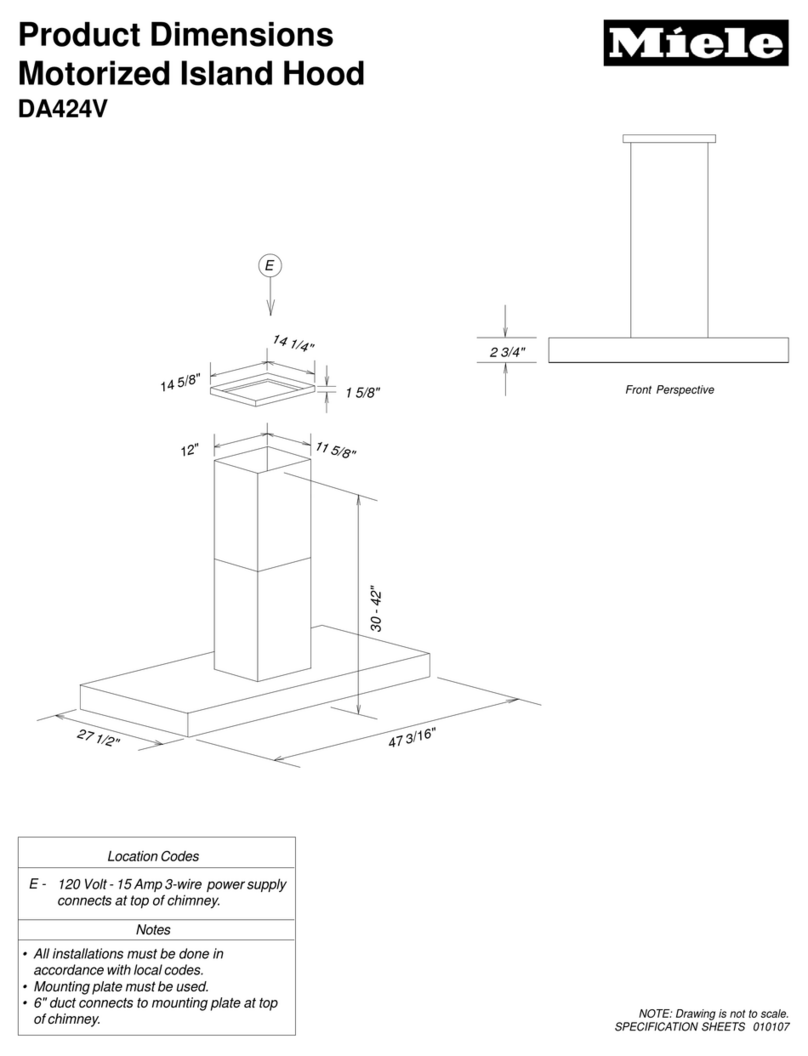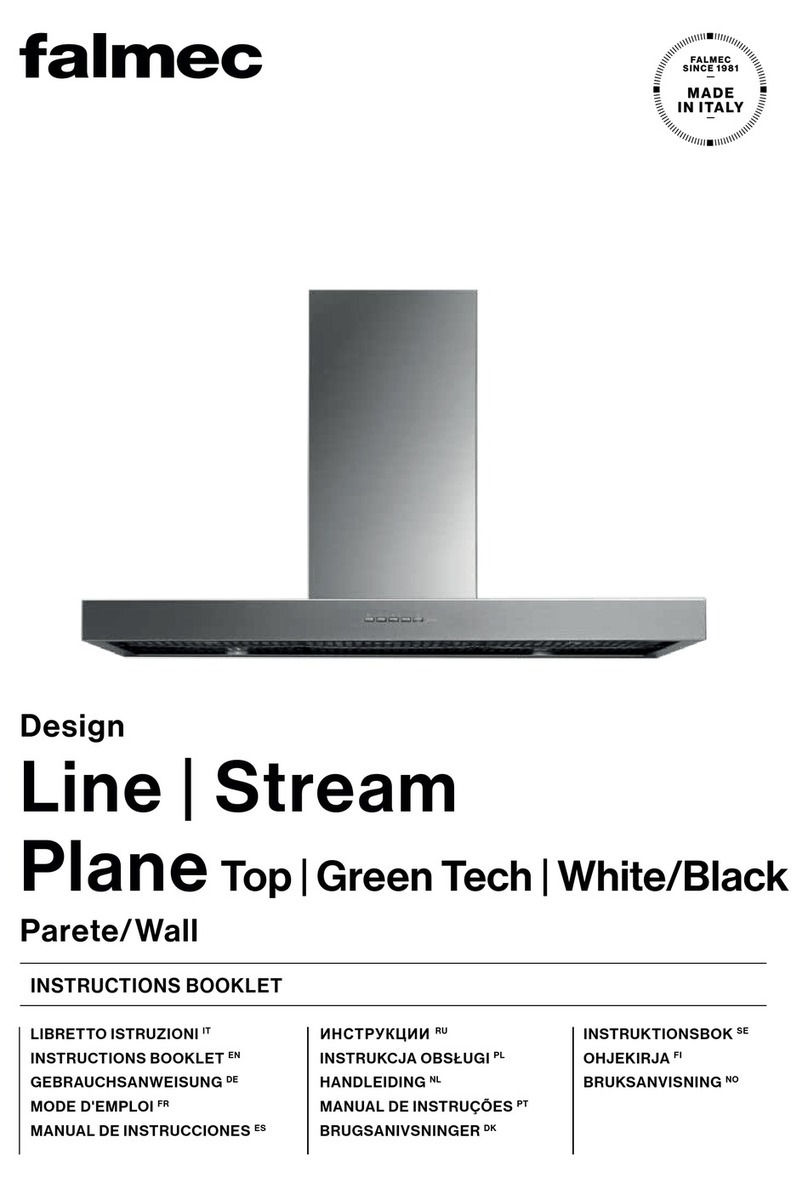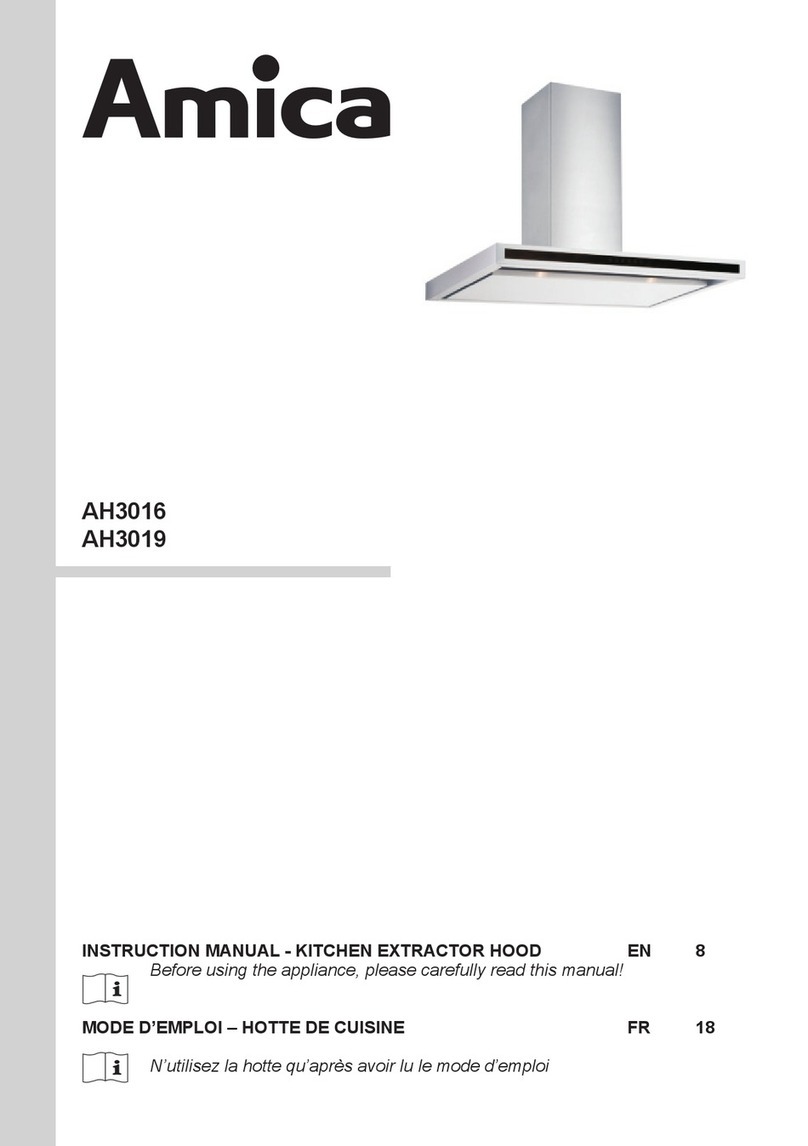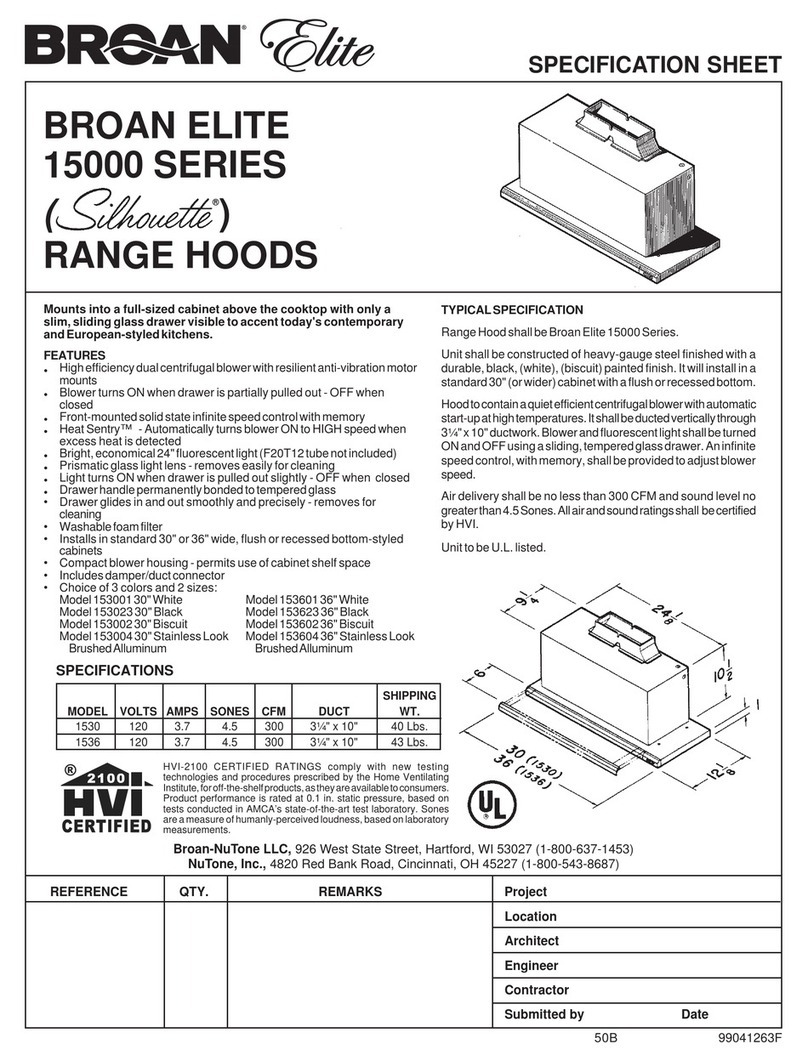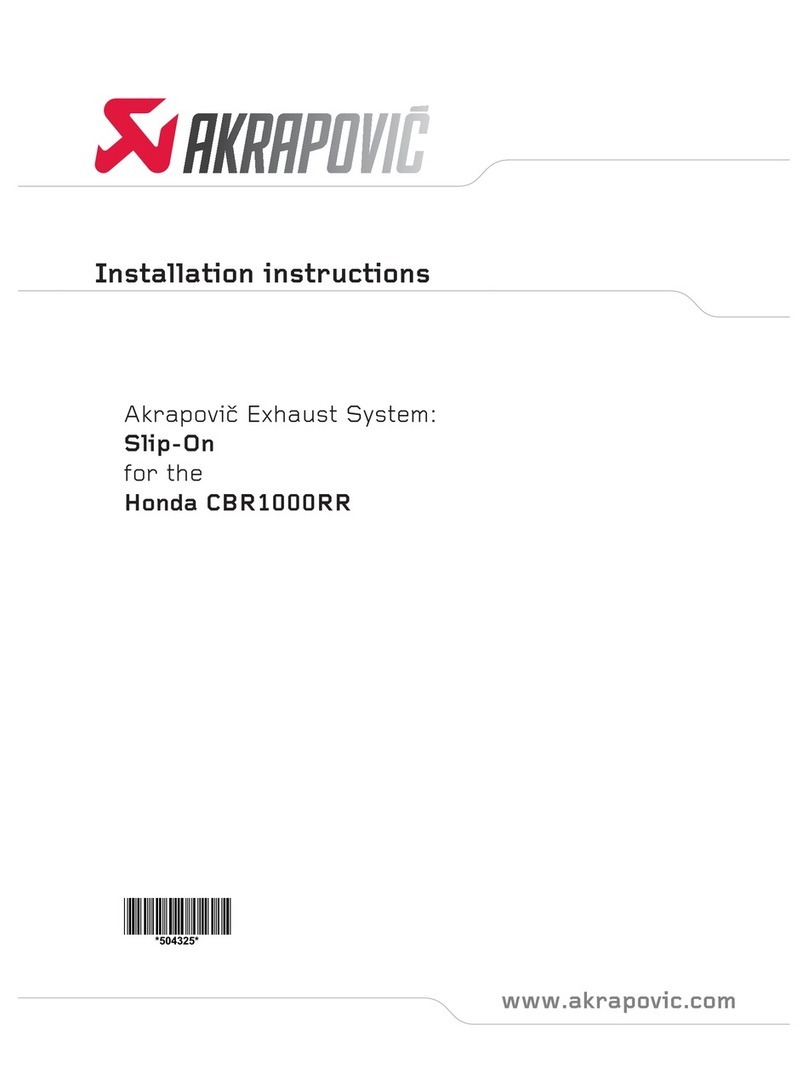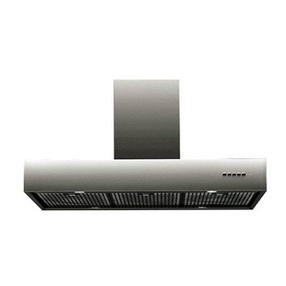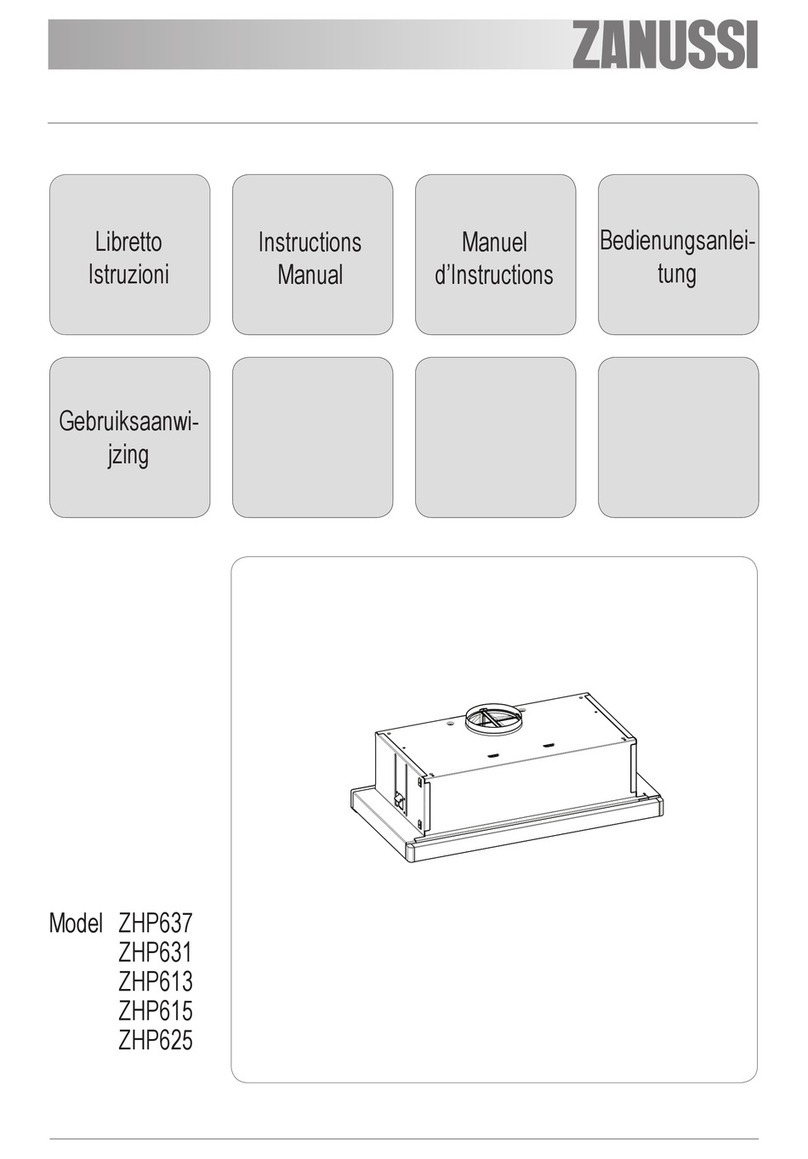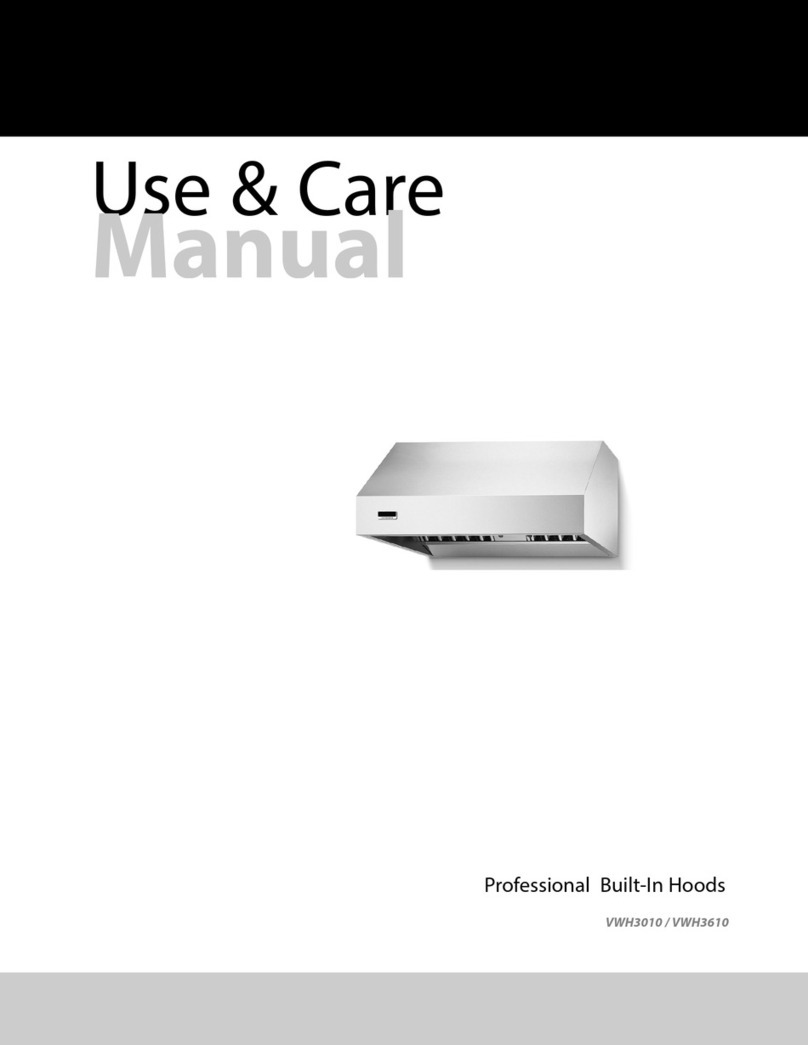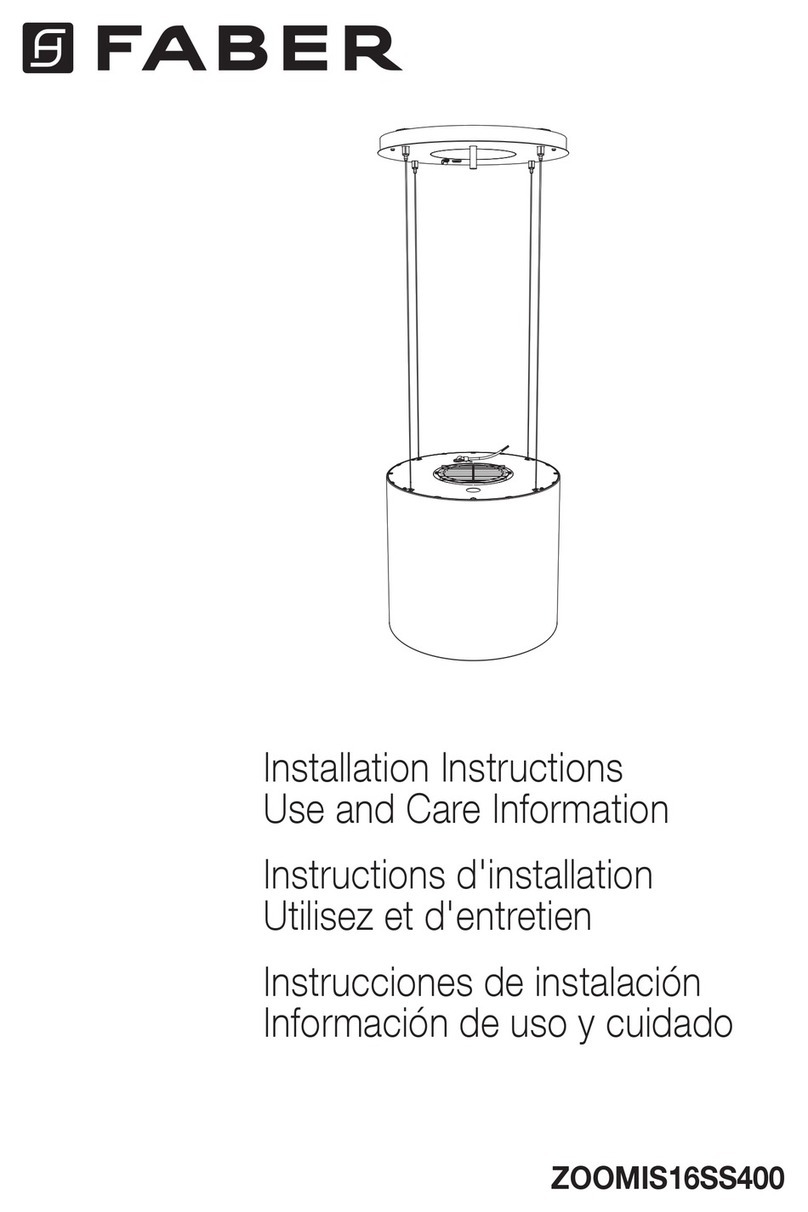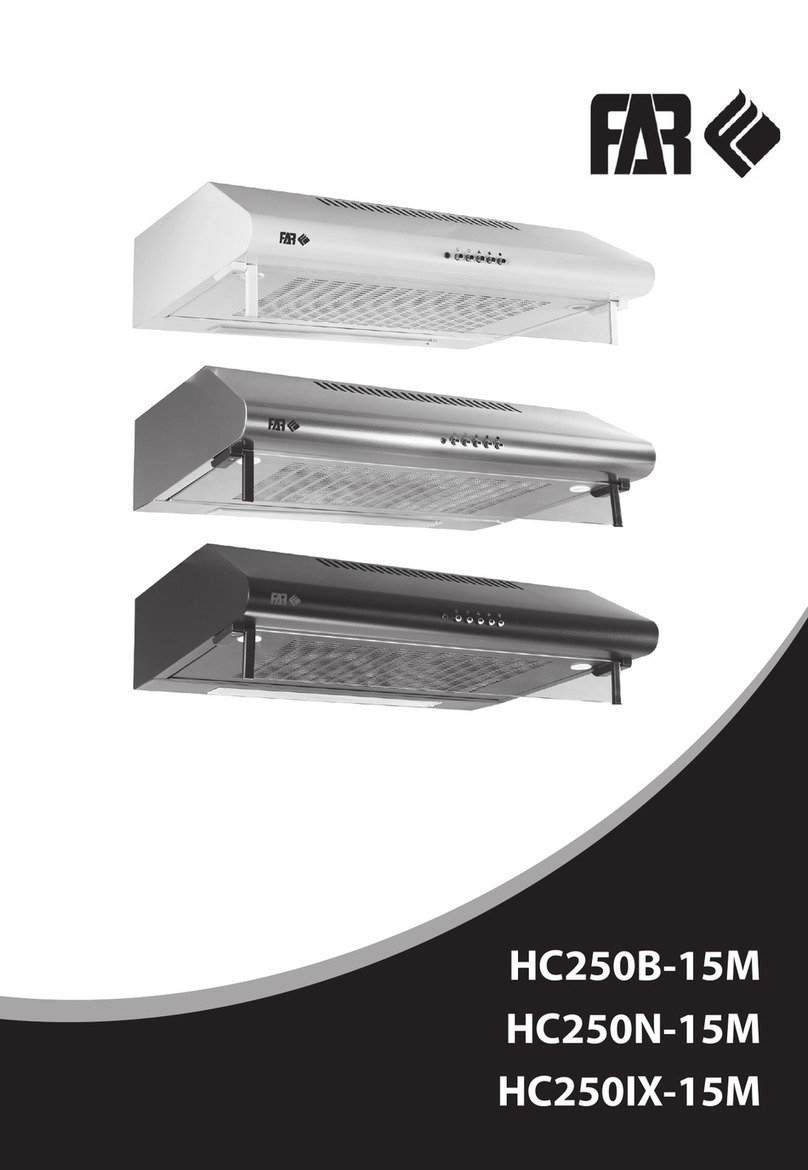TSI Instruments ALNOR LOFLO BALOMETER User manual

ALNOR®LOFLO BALOMETER®
CAPTURE HOOD
OWNER’S MANUAL
P/N 116620001, REV 08
SEPTEMBER 2014
www.calcert.com [email protected]1.800.544.2843 0
5
10
15
20
25
30

v
TABLE OF CONTENTS
Section 1 General Description................................................1
Section 2 Theory of Operation................................................1
Section 3 Safety......................................................................2
Section 4 Instrument Setup and Storage................................2
Section 5 About the Instrument Display..................................4
Section 6 Getting Started........................................................5
Section 7 Detailed Operation..................................................5
Section 8 Troubleshooting......................................................8
Section 9 Maintenance...........................................................9
Section 10 Service Information...............................................10
Appendix A Correction Factors for Standard
Flow Rate to Actual Flow Rate .............................11
Appendix B Model 6200 LoFlo Balometer®Capture Hood Field
Setting Instruction for User Programmable
Correction Factors ................................................12
www.calcert.com [email protected]1.800.544.2843 0
5
10
15
20
25
30

1
SECTION 1
General Description
The Alnor®LoFlo Balometer®Capture Hood is a
compact instrument that measures very low air
flow rates in HVAC systems. It measures from 10
to 500 cfm (17 to 850 m3/h, 4.7 to 236 l/s). The
LoFlo Balometer®Capture Hood displays standard
air volume rate when placed at supply or return
diffusers, registers, or grilles located on the
ceiling, wall, or floor.
The LoFlo Balometer®Capture Hood has a vent
mechanism which reduces the restriction of air
flow caused by the instrument. This unique venting
system (patent pending) allows the instrument to
remain compact while still measuring a wide range
of volume rates. The LoFlo Balometer®Capture
Hood should be used with the vents closed at
lower volume rates, but higher volume rates
should be measured with the vents open to
minimize any resistance effects. A 2-point
measurement may be taken to compensate for the
resistance effect of the instrument at higher
volume rates.
The LoFlo Balometer®Capture Hood is battery
powered and may be used with or without optional
hoods. It weighs just over 6 pounds with the 2' x 2'
hood, helping to reduce worker fatigue.
SECTION 2
Theory of Operation: Capture Hoods
and Thermo-anemometry Sensing
As air exits a diffuser, it is captured in the hood or
base and directed over a manifold. The manifold
averages the velocity pressure and directs air over
the sensors. The velocity and temperature of the
air passing through the manifold are sensed, using
a constant temperature thermo-anemometer
principle. The voltage output from the sensor is
then calibrated for the entire volume rate passing
through the LoFlo Balometer®Capture Hood.
All capture hoods are susceptible to “odd” air flow
patterns. “Odd” could refer to any air flow pattern
different from the pattern where it was calibrated.
Substantial negative effects can be observed
when using a large hood on a small diffuser. For
example, using a 2' x 2' hood on a 10" x 10"
diffuser. This creates large recirculation regions on
the sides of the fabric hood and causes an “odd”
air flow pattern as it passes over the manifold. It is
recommended to match the hood closely to the
size of the diffuser.
NOTE: Throughout this manual, the units cfm,
m3/h and l/s are used for simplicity. Note,
however, that the LoFlo Balometer®Capture
Hood actually reads in standard cubic feet per
minute (scfm), standard cubic meters per hour
(std. m3/h), or standard liters per second
(std. l/s).
www.calcert.com [email protected]1.800.544.2843 0
5
10
15
20
25
30

2
SECTION 3
Safety
When using the LoFlo Balometer®Capture Hood
to check air flow at ceiling diffusers, make certain
that you can safely raise and hold the unit while
making measurements. Be especially careful
when working on a ladder.
Observe all necessary precautions so that the unit
does not become caught in moving machinery or
touch any exposed electrical wiring.
The LoFlo Balometer®Capture Hood is not
designed for gas mixtures other than air. Use with
corrosive or other dangerous or explosive gas
mixtures is not recommended and is at the user’s
risk.
C A U T I O N
WHILE USING THE LOFLO BALOMETER®INSTRUMENT TO TEST AIR FLOW IN DUCTS,YOU
MAY COME INTO CONTACT WITH OR BE EXPOSED TO DUST,POLLEN,MOLD,FUNGUS,OR
OTHER AIRBORNE CONTAMINANTS.IF YOU ARE OR MAY BE SENSITIVE TO DUST,POLLEN,
MOLD,FUNGUS,OR OTHER AIRBORNE CONTAMINANTS,ALWAYS USE AN APPROPRIATE
MASK OR RESPIRATOR WHILE EMPLOYING THE LOFLO BALOMETER®INSTRUMENT.
SECTION 4
Instrument Setup and Storage
Hood Setup
1.Locate the four (4) aluminum channels for the
hood and position them into a square with the
foam facing up. Slide the “U” opening on the
channel end (Fig. 1) and corner bracket
toward the brass eyelets until you feel it latch.
2.Continue with the other two channels until you
have a square frame that is locked tightly in all
four corners.
3.Locate the hood for the frame size you have
assembled.
4.Position a corner seam of the hood onto the
corner of the frame. Stretch the nylon hood to
an adjacent corner until the hood corner
meets the frame corner.
5.Push the elastic cord into the channel along
the side of the frame.
6.Repeat steps 4 and 5 until the hood assembly
is complete and ready to mount onto the base.
7.Place hood on a table or clean floor with the
base inside the opening. Pull the hood over
the base. Rotate the hood assembly until the
metal cups are above the spring-loaded pins.
8.Locate the hood support rods. Extend the
hood so it is taut and insert one support rod
onto the spring-loaded pin closest to you.
9.Push the support rod down and insert the top
end of the rod into the metal cup on the hood
frame. Fig 1.
10. Install the rod on the opposite side then install
the last two rods.
Figure 1
Hood Frame Channel
www.calcert.com [email protected]1.800.544.2843 0
5
10
15
20
25
30

3
3
Instrument Storage
The hood and frame assemblies can be detached
from the instrument base and placed inside their
own carrying case without disassembly.
The LoFlo Balometer®Capture Hood should
always be turned off before re-packing the
instrument. If storing the LoFlo Balometer®
Capture Hood for an extended period of time,
remove the batteries to prevent damage due to
leakage.
Battery Installation
To install the 4 C-size batteries that ship with the
LoFlo Balometer®Capture Hood:
1. Make sure the LoFlo Balometer®Capture
Hood switch is off.
2. Remove the battery cover located on top of
the meter.
3. Slide the battery holder up until the snap
connector is exposed.
4. Disconnect the battery holder from the LoFlo
Balometer®Capture Hood.
5. Install the 4 C size batteries in the holder.
6. Reconnect the snap connector and slide the
battery holder into the battery compartment.
7. Replace battery cover.
www.calcert.com [email protected]1.800.544.2843 0
5
10
15
20
25
30

4
SECTION 5
About the Instrument Display
This display is an analog display, simulated with
26 LCD segments to give the user the response of
a mechanical Balometer®Capture Hood. It also
displays an exact digital number, using 3½ digit
numeric section. The LCD has indicators for
supply, return, manual range, vent modes, and low
battery.
Figure 3 shows the front of the LoFlo Balometer®
Capture Hood.
Index No.
Name
1
LCD
2
On/Off Switch
3
Supply/Return Button
4
Manual Range Button
5
Handle Button
6
Battery Holder
7
Vents
8
Vent Open/Close Slide
Figure 4 shows the LCD.
Index No.
Name
1
Digital Readout
2
Simulated Analog Display
3
Manual Range Indicator
4
Supply/Return Indicator
5
2-Point Mode Indicator
6
Vent Indicator
7
Units Indicator
8
Low Battery Indicator
Figure 3
Front View of LoFlo Balometer®Capture Hood
Figure 4
LoFlo Balometer®Capture Hood LCD
www.calcert.com [email protected]1.800.544.2843 0
5
10
15
20
25
30

5
5
SECTION 6
Getting Started
NOTE: The instrument should be allowed to
stabilize to room conditions in order to achieve
specified accuracy.
1. If you are using a hood with the unit,
assemble the LoFlo Balometer®Capture
Hood as described in Section 4, “Instrument
Setup and Storage.”
2. Turn on the unit using the slide switch
located on the right side of the meter.
3. When turned on, the LoFlo Balometer®
Capture Hood displays the vent closed
indicator. Close the vent on the base by
turning the top baffle counter clockwise.
4. Select the proper mode for air flow direction,
supply or return.
5. Place the LoFlo Balometer®Capture Hood
over the diffuser or grille to be measured.
6. The auto range feature of the LoFlo
Balometer®Capture Hood will choose the
correct scale and display the volume rate in
the digital readout section. A quick press on
the handle switch will freeze the display.
7. Another quick press will unfreeze the display.
8. For volume rates above 150 cfm (255 m3/h,
71 l/s), it is recommended to use the vent
open mode to minimize air flow resistance
effects. See Section 7, “Detailed Operation.”
NOTE: Make sure that there are no gaps
between the LoFlo Balometer®Capture Hood
and the surface around the diffuser or grille.
Also, make sure that your body or other objects
are not blocking or diverting the air flow where
the air is exiting (supply) or entering (return).
This will affect the reading.
SECTION 7
Detailed Operation
Handle Button
In 1-point mode, the handle button will freeze the
digital reading and flash the value when it is
pressed for less than three seconds. When the
handle button is pressed for more than three
seconds, it switches the LoFlo Balometer®
Capture Hood between vent closed mode and
vent open mode.
In 2-point mode, the handle button cycles the
instrument through the 2-point measurement
process. See 2-point mode section for detail.
Auto/Manual Ranging Button
When turned on, the instrument is in auto-range
mode. The user can switch to manual range mode
by pressing the range button. The manual range
indicator will show. By pressing the range button,
the meter display switches to the next volume
range. To return to auto-range mode, press and
hold the range switch until the manual range
indicator disappears.
Changing Measurement Units
To change measurement units:
1. Turn the instrument off.
2. Press and hold the supply/return button and
switch the instrument on at the same time.
3. The display will flash one of the three
available measurement units: cfm, m3/h, l/s.
4. Press and hold the supply/return button or the
range button to scroll through the
measurement units.
5. When the units you desire are displayed,
switch the instrument off.
6. When you turn the instrument on again, your
chosen units will be displayed.
www.calcert.com [email protected]1.800.544.2843 0
5
10
15
20
25
30

6
Supply/Return Button
The LoFlo Balometer®Capture Hood is in supply
mode when turned on. This is indicated on the
display with the supply indicator . To take return
air measurements, press the supply/return button
on the front of the meter. Return air mode will be
indicated on the display with the return indicator
.
Significant errors may result if:
Instrument is not in proper mode.
Fabric hood is not used with vent open
mode.
Vent Closed/Vent Open Modes
When the instrument is turned on, it is in the vent
closed mode . When the vent closed indicator
is on, the vents must be closed to take the
measurement. Close the vents by loosening the
thumbscrew and sliding the vent baffle to the fully
closed position and locking the vent in place
again.
The vent open mode is indicated with the vent
open indicator on the LCD . Open the vents by
loosening the thumb screw and sliding the vent
baffle to the fully open position and locking it into
place again. Then press and hold the handle
switch for more than 3 seconds to switch the
LoFlo Balometer®Capture Hood to the open vent
mode.
The vent open mode was developed for higher
volume rates on larger diffusers; the 2' x 2' or 650
mm x 650 mm hood should always be used with
vent open mode.
1-Point Measurement Mode
The default mode of the LoFlo Balometer®
Capture Hood is the 1-point measurement mode.
If you are in 2-point measurement mode, simply
turn the instrument off and turn back on.
The 1-point measurement mode is described in
the Getting Started section earlier in this manual.
This is the faster, simpler way to take
measurements.
Use Vent Closed Mode for measurements
between:
10 to 150 cfm (17 to 255 m3/h, 4.7 to 71 l/s).
NOTE: In Vent Closed Mode, volume rates
below 8 cfm (13 m3/h, 3.6 l/s) are displayed as
0; volume rates above 517 cfm (879 m3/hr, 244
l/s) are displayed as Or.
Use Vent Open Mode for measurements between:
150 to 500 cfm (255 to 850 m3/h, 71 to 236 l/s)
NOTE: In Vent Open Mode, volume rates
below 150 cfm (255 m3/h, 71 l/s) are displayed
as Ur; volume rates above 517 cfm (879 m3/h,
244 l/s) are displayed as Or.
2-Point Measurement Mode—Supply
Only
To activate the 2-point measurement mode, turn
the instrument off. While pressing the handle
button, turn the instrument back on. The 2-point
mode indicator will show.
The 2-point measurement mode takes both vent
open and vent closed measurements to calculate
a resistance-compensated volume flow rate.
The process starts with the vents closed and the
display showing the vent closed indicator.
1. Place the LoFlo Balometer®Capture Hood
over the diffuser to be measured and press
the handle switch once to take the vent closed
measurement.
2. The instrument stores that reading.
3. The display will now show the open vent
indicator and you should open the vents.
NOTE: Make certain you are using a fabric
hood when in 2-point mode.
4. Again place the LoFlo Balometer®Capture
Hood over the diffuser to be measured and
press the handle switch to take the vent open
measurement.
5. The instrument calculates and displays the
compensated reading.
6. The numeric display will flash; press the
handle switch again and the instrument will
display the vent closed indicator. Close the
vents.
7. Return to Step 1 to take another resistance
compensated reading.
NOTE: Return to 1- point measurement mode
at any time by turning the power off and on.
www.calcert.com [email protected]1.800.544.2843 0
5
10
15
20
25
30

7
7
When “–––” is displayed at the last step of the 2-point mode, the calculation for the resistance effect cannot
be made. It can be caused by any of the conditions listed here.
Condition
Reason
The vent closed or vent open measurement is less
than 150 cfm (70 l/s, 255 m3/h).
Calculations are not made at the low end since
the effect is small and can generally be
neglected. Use 1-point mode.
The vent closed or vent open measurement is
greater than 500 cfm (235 l/s, 850 m3/h).
Calculations are not made beyond the calibrated
range.
The vent open measurement minus the vent closed
measurement is too small (< 0).
A mistake has occurred in the process. Repeat
the two-point measurement.
The resistance effect is small and was
overwhelmed by natural fluctuations. Use single-
point mode.
The vent open measurement minus the vent closed
measurement is too large.
A mistake has occurred in the process. The vent
may not have been open for the open vent
measurement. Repeat the two-point
measurement.
The effect is beyond the range of the
compensation equation. Perform a traverse of the
system instead.
NOTE: The display will also show “–––” when the return mode is selected. The 2-point measurement
mode is for supply only.
www.calcert.com [email protected]1.800.544.2843 0
5
10
15
20
25
30

8
SECTION 8
Troubleshooting
Symptom
Possible Cause and Corrective Action
Meter does not turn on.
Battery holder snap connector not connected.
Connect battery holder to instrument.
Batteries may be discharged. Charge or replace
them.
Switch failure, wiring failure, or circuit failure. Call
TSI.
Meter reading lower than expected.
Wrong vent mode chosen. Choose correct vent
mode, open or closed.
Wrong air direction mode chosen. Choose
correct direction, supply or return.
Back pressure effects could be significant. Use 2-
point measurement mode.
Hood frame not sealing properly around diffuser
or grill. Press hood evenly against diffuser.
Odd air flow pattern present. Perform traverse
and use proportional balancing.
Hood torn. Replace, or repair tear with duct tape
or other non-porous material.
Meter out of calibration. Call TSI.
Damage to manifold. Call TSI.
Meter reading higher than expected.
Wrong vent mode chosen. Choose correct vent
mode, open or closed.
Wrong air direction mode chosen. Choose
correct direction, supply or return.
Odd air flow pattern present. Perform traverse
and use proportional balancing.
Meter out of calibration. Call TSI.
Meter not at zero at zero flow.
Instrument not at room temperature. Allow
instrument to acclimate before turning on the
power.
The LoFlo Balometer®Capture Hood is reading
real room air currents. Place on floor with a piece
of cardboard over the top to determine if it is
measuring real air currents.
Meter out of calibration. Call TSI.
Meter displays Er.
Self test failed. Call TSI.
Handle button not working.
Call TSI.
www.calcert.com [email protected]1.800.544.2843 0
5
10
15
20
25
30

9
9
SECTION 9
Maintenance
Hoods
Hoods may be cleaned in cool water with a mild
detergent.
Sensing Manifold
The manifold should be checked visually before
using to be certain that the sensing holes have not
become clogged with dirt or dust particles. Do not
immerse the manifold in water. It is recommended
that cleaning be done with extreme care with the
manifold in place. Do not use highly compressed
air to clean the manifold tubes.
Calibration
It is recommended that your LoFlo Balometer®
Capture Hood be returned to the factory once a
year for a calibration check. When shipping the
LoFlo Balometer®Capture Hood for factory
calibration, pack it carefully, and follow the
Instructions for Return in this manual.
Vent Operation
If the vent becomes difficult to operate, remove
both thumbscrews from the vent mechanism and
spray the contacting surfaces with silicone spray
lubricant. Wipe off excess and reassemble vent
mechanism.
Performance Check
If the calibration is to be checked, the best way is
to use a reference flow standard more accurate
than the LoFlo Balometer®Capture Hood. Flow
standards that may be used for this purpose
include orifice plates, venturis, nozzles, and
laminar flow elements. These devices require
accurate differential pressure, barometric
pressure, and temperature reading instruments to
measure either actual or standard volume rate.
If the LoFlo Balometer®Capture Hood is checked
against a velocity instrument such as a pitot
probe/manometer or thermo-anemometer, there
may be errors. If a velocity standard is used, the
average velocity must be obtained by taking a
traverse.* The accuracy of the traverse is
dependent on the flow uniformity, the number of
readings taken, the accuracy of the velocity
instrument, and operator expertise. This average
velocity reading must then be multiplied by the
area over which the traverse was taken.
Finally, air flow instrumentation is dependent on
environmental conditions such as temperature,
atmospheric pressure, humidity, and even
turbulence. These conditions can have very
different effects on various instrument types.
Caution must be exercised when making
comparisons.
*A traverse is a set of velocity readings taken in a
prescribed pattern which will provide an overall velocity
value when averaged together. Any of the Alnor velocity
measuring instruments can be used for this purpose.
www.calcert.com [email protected]1.800.544.2843 0
5
10
15
20
25
30

LOFLO BALOMETER®
Specifications*
Range: 10–500 cfm (17–850 m3/h)
(4.7–236 l/s)
Accuracy: ±(3% + 5 cfm)
[±(3% + 8,5 m3/h, 2,4 l/s)]
Height: 15.5 in., base only (394 mm)
22 in., with 16 x 16 hood (559
mm)
34.5 in., with 2 x 2 hood (876
mm)
Weight: about 6 lbs (2.7 kg) with hood
4.6 lbs (2.1 kg) base only
Base Diameter
Opening: 13.3 in. diameter (338 mm)
Hood sizes: 16 x 16 in., 2 x 2 ft., or
26 x 26 in. (406 x 406 mm, 610
x 610 mm, or 650 x 650 mm)
Display: 3.5 digit, .44 in. (11 mm) high,
digital display with 26 segment
simulated analog display
Resolution 1 cfm from 10–500 cfm
(Supply or 0.1 l/s from 4.7 to 9.9
Return) 1 l/s from 10 to 236 l/s
Power Source: 4C 1.5V alkaline batteries
(optional Nickel Cadmium)
Battery Life: 10 hrs. minimum with continuous
use
*Specifications subject to change without notice.
www.calcert.com [email protected]1.800.544.2843 0
5
10
15
20
25
30
This manual suits for next models
1
Table of contents
Other TSI Instruments Ventilation Hood manuals
Popular Ventilation Hood manuals by other brands

Jenn-Air
Jenn-Air JXD7036Y Series Installation Instructions and Use & Care Guide
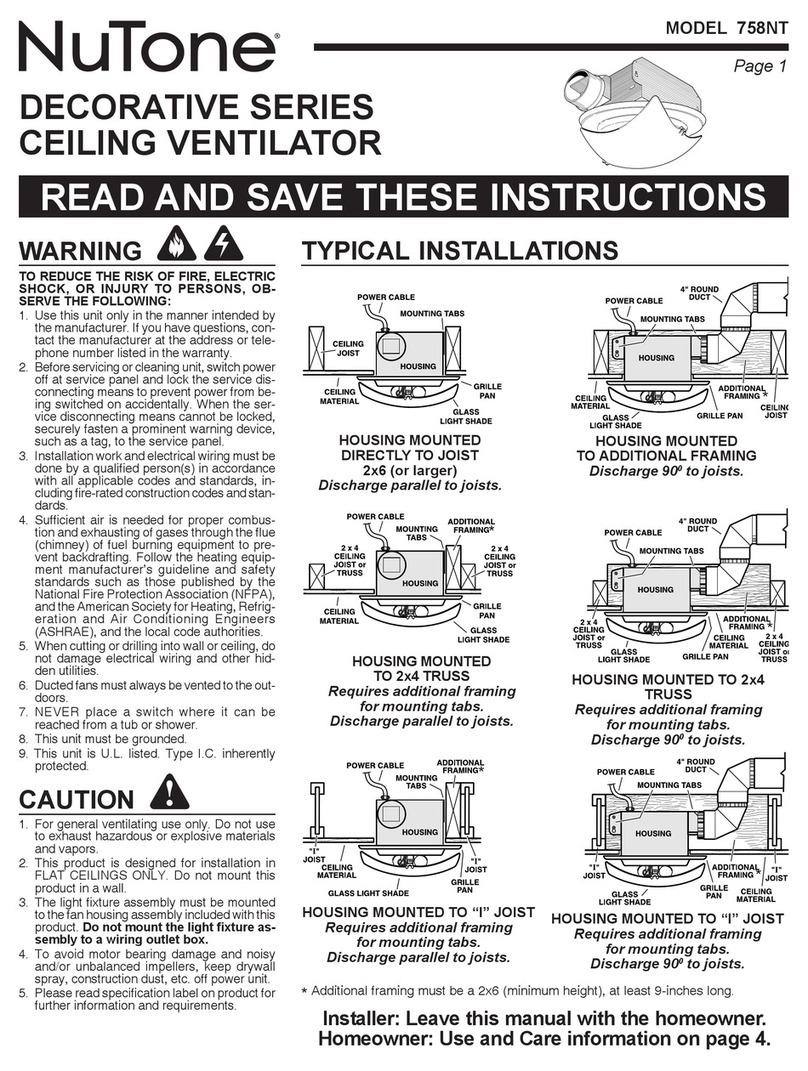
NuTone
NuTone 758NT instructions
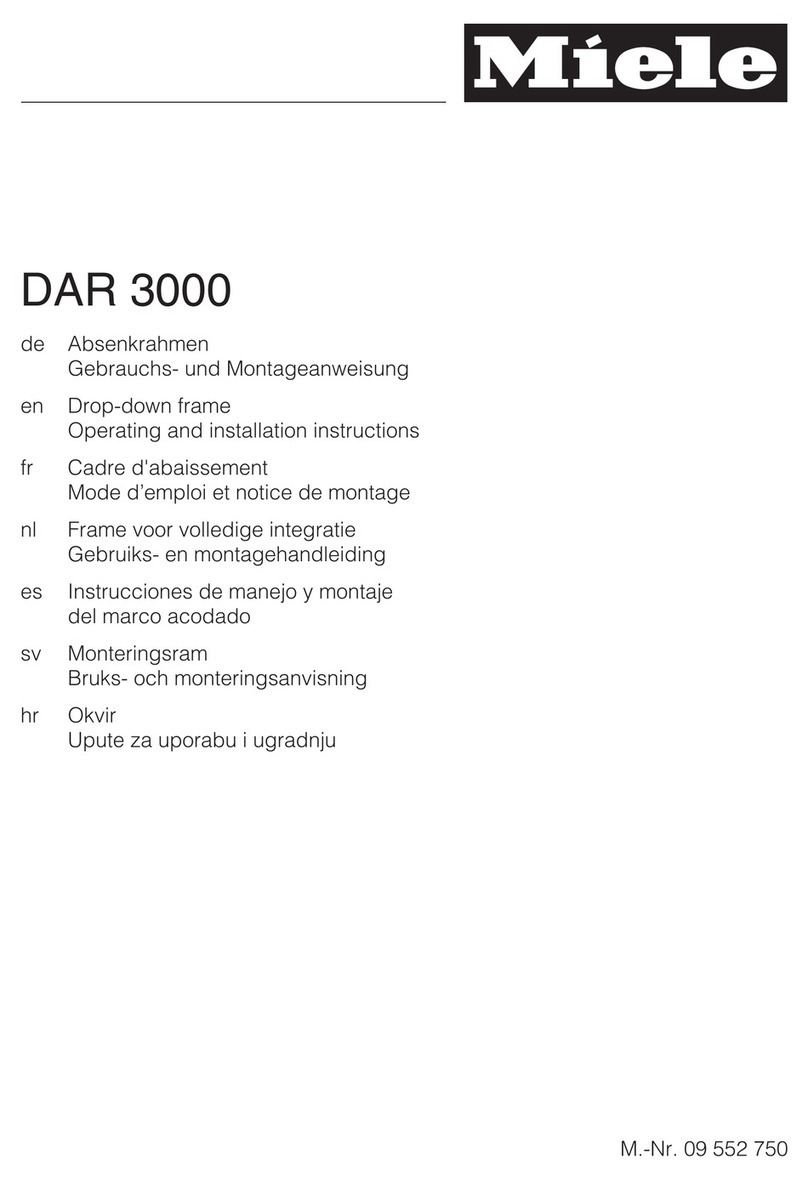
Miele
Miele DAR 3000 Operating and installation instructions

AKDY
AKDY 10A3 - 30 Installation Instructions and Use & Care Guide

Gorenje
Gorenje DF 6315 X Instruction on mounting and use

Cata
Cata ASOMA 600 Operation and storage manual
